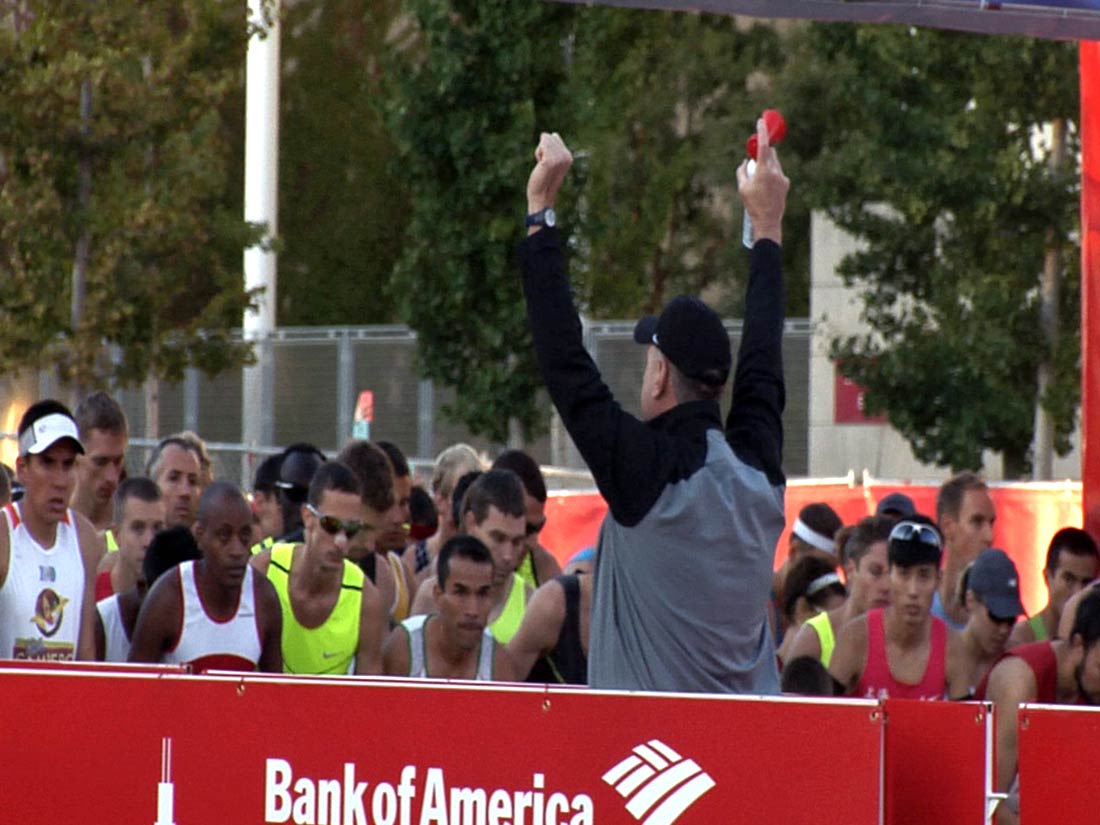By Kayla Daugherty
Early on the morning of October 11, security crews started work to prepare for 45,000 runners and over a million spectators that arrived for the Chicago Marathon.
The safety of thousands of runners from all over the world was Chicago Police Chief Wayne Gulliard’s goal. Gulliard is the chief of the Bureau of Patrol and oversaw security measures from the command center near the race.
“I expect it to be a great success. We planned for many contingencies,” he said. “We cannot prevent everything, but we plan for everything and we are working with a lot of our partners in law enforcement and other city agencies. We expect a positive outcome.”
Security efforts were coordinated through Chicago’s Office of Emergency Management and were provided by the U.S. Department of Homeland Security, the Chicago and Illinois State Police, the Federal Bureau of Investigation, the U.S. Secret Service and Monterey Security, a private security group.
Paul Horbook, a security guard for Monterey Security, started his shift at two in the morning Sunday at the starting corrals. He was on watch until around four or five that evening, observing runners and supporters.
“For the most part, we just observe and try to maintain safety because of the incident that happened in Boston,” he said. “A lot of it has just been safety procedures just checking bags. So far everything has been alright.”
Despite the early start and long shift, Horbook was happy to work security for the race.
“I like working events like this and you get to see how beautiful the city is. Today is a great day. We have over a hundred thousand charities and 45,000 runners for a good cause,” Horbook said.
Spectators were not allowed to be at the starting corrals nor at the finish line due to heightened security measures enacted after the bombing at the 2013 Boston Marathon. In addition, runners, media and volunteers had to pass through security prior to the start of the race.
One of the marathon runners, Barb Johnson, 23, was surprised at the laxity of the start line security. Johnson, a security officer in Michigan, felt safe while running but thought there should have been better security in the beginning.
“They did just kind of a once-over, which I was kind of surprised about,” said Johnson. “I thought it would be more.”
Along the race route, waist-high metal barriers and police officers at every corner of every block protected runners. This proved successful, except at the Bank of America Cheer Zone (mile 12.5) where spectators broke through and blocked nearly a lane and a half of the race. No other security-related incidents were reported.
For Jason and Stephanie Cook, this was their second marathon, but their first Chicago Marathon experience. The couple ran the Richmond Marathon for their first race and traveled from Charlotte to experience a race in a big city.
“It is a much bigger production. There’s a lot more people, there’s a lot more excitement,” said Stephanie, 39. “There’s a lot more fans, and it’s very very different.”
Security didn’t concern Jason Cook, 36, at all during his run, allowing him to focus on the task at hand. Stephanie also noted the police presence before, during and after the race.
“I did (feel safe). I felt like there were a lot of security and it was very visible,” she said.

